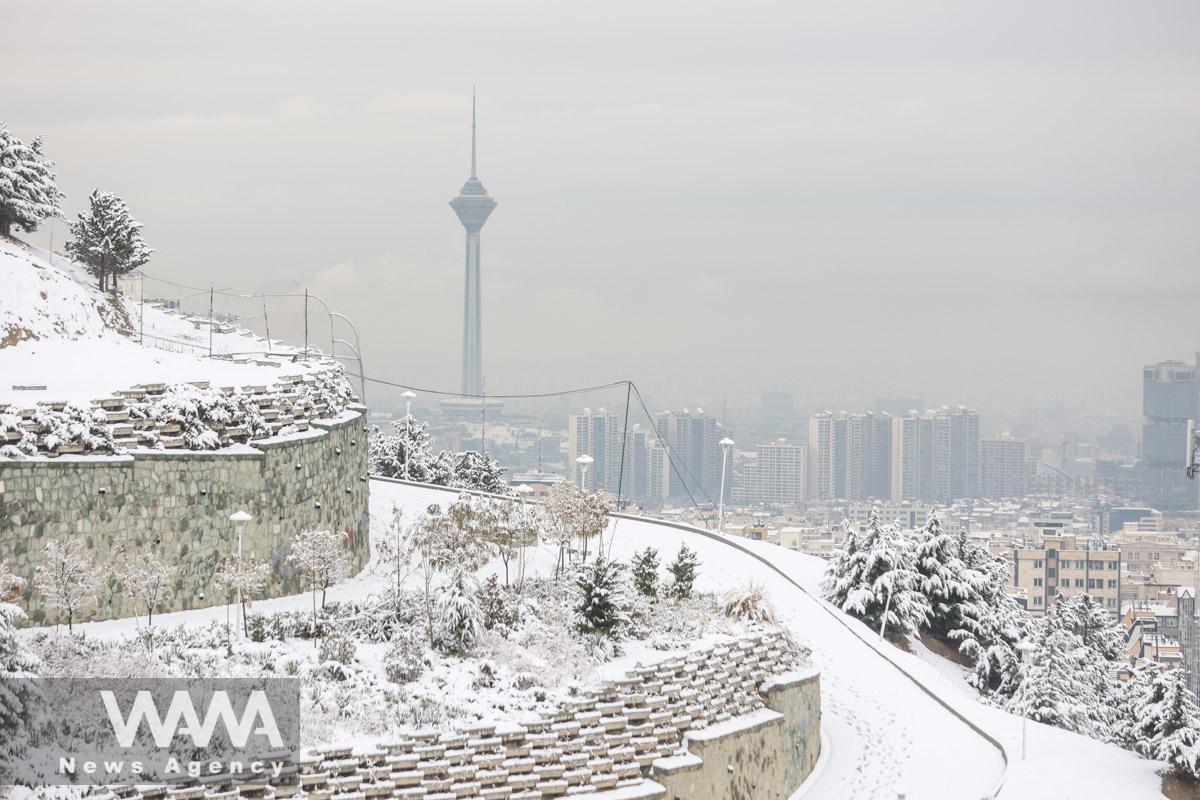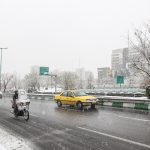First Tehran winter snow brings hope amidst concerns for water shortage
WANA – Tehran witnessed the first beautifying Tehran winter snow which whitened the northern parts of the city and brought hope that this winter will be a wet one amidst increasing concerns for water shortage throughout the country.
The snowfall is not limited to Tehran where it also contributes to a cleaner weather, but is going on in several Iranian provinces and cities leading to the closure of many schools in places with high precipitation. The only exceptions where have neither snowfall nor rainfall are some parts of the west east region of the country.
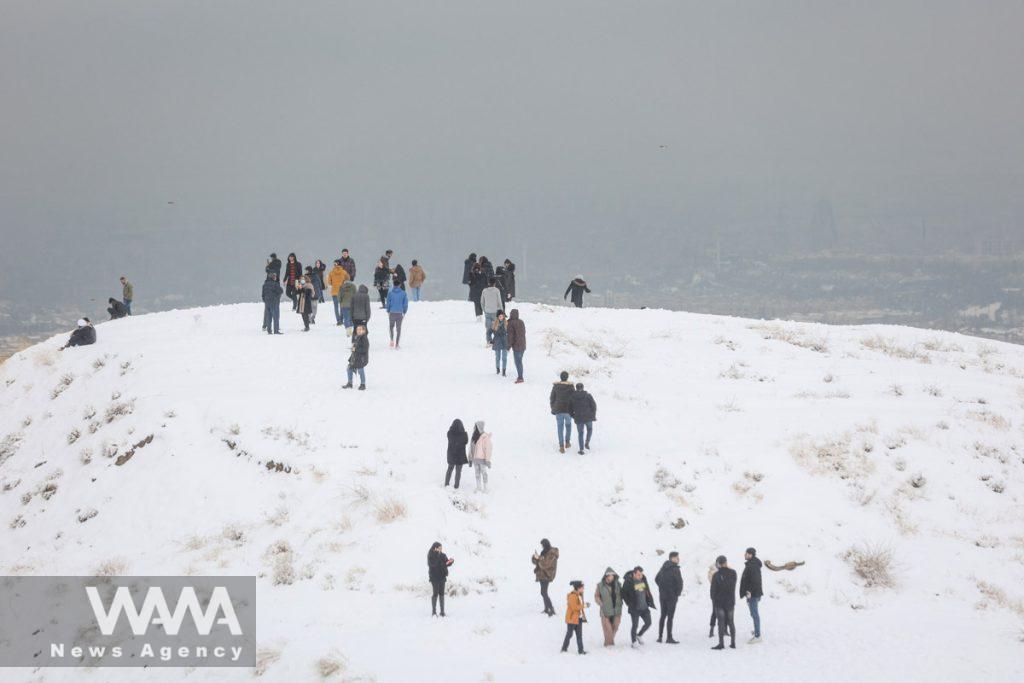
People walk during the first snowfall in a park in Tehran, Iran December 24, 2022. Majid Asgaripour/WANA (West Asia News Agency)
The precipitation in the country is directly relevant to the issue of water shortage in Iran, a major source of worry which is caused by high climatic variability, poor distribution of water, and prioritization of economic development. Water shortage in Iran is further worsened by climate change and drought, as well as mismanagement.
In general, water shortage can be a result of two mechanisms: physical (absolute) water shortage and economic water shortage, where physical water scarcity is a result of inadequate natural water resources to supply a region’s demand, and economic water scarcity is a result of poor management of the sufficient available water resources.
Rainfall is highly seasonal in Iran, which led to the government building dams to ensure a more consistent water supply. Despite this, water availability has declined since the 20th century whilst demand has increased. By the 2010s, authorities and the United Nations were describing it as a crisis. Weather experts say 97 percent of the country is dealing with water scarcity issues.
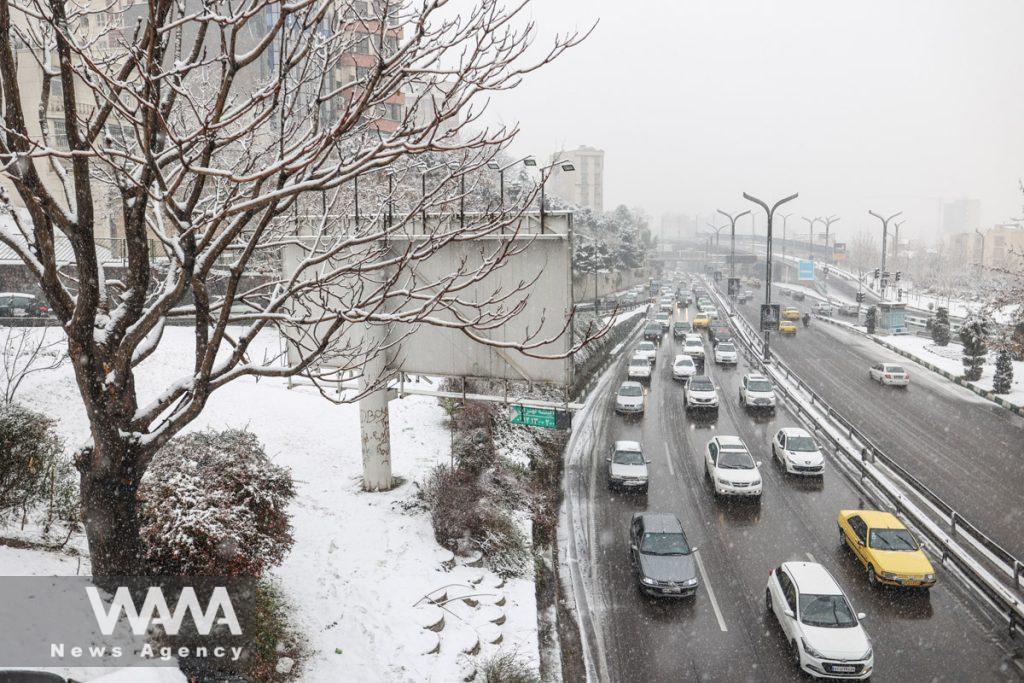
Cars pass on a street during the first snowfall in Tehran, Iran December 24, 2022. Majid Asgaripour/WANA (West Asia News Agency)
Furthermore, most drinking water in Iran is supplied through modern infrastructure, such as dams, reservoirs, and long-distance transmission pipelines.
In July 2013, Isa Kalantari, a former Minister of Agricultural told that the water crisis is the “main problem that threatens” Iran, adding that it is more dangerous “than Israel, USA or political fighting among the Iranian elite”. If the water issue is not addressed, Iran could become “uninhabitable”. If this situation is not reformed, in 30 years Iran will be a ghost town. Even if there is precipitation in the desert, there will be no yield, because the area for groundwater will be dried and water will remain at ground level and evaporate.”
Later, that year in December, Hamid Chitchian, Head of the Ministry of Energy, which is in charge of regulating the water sector—stated that the sector’s situation had reached “critical levels”. He established that past approaches, which mainly focused on constructing dams and trying to increase the storage capacity, would no longer be appropriate remedies. In fact, total storage capacity behind the country’s many dams amounts to 68 billion cubic meters, whereas the water potential of the country’s rivers totals 46 billion cubic meters per annum.
A 2017 United Nations report also stated that “Water shortages are acute; agricultural livelihoods no longer sufficient. With few other options, many people have left, choosing uncertain futures as migrants in search of work”.
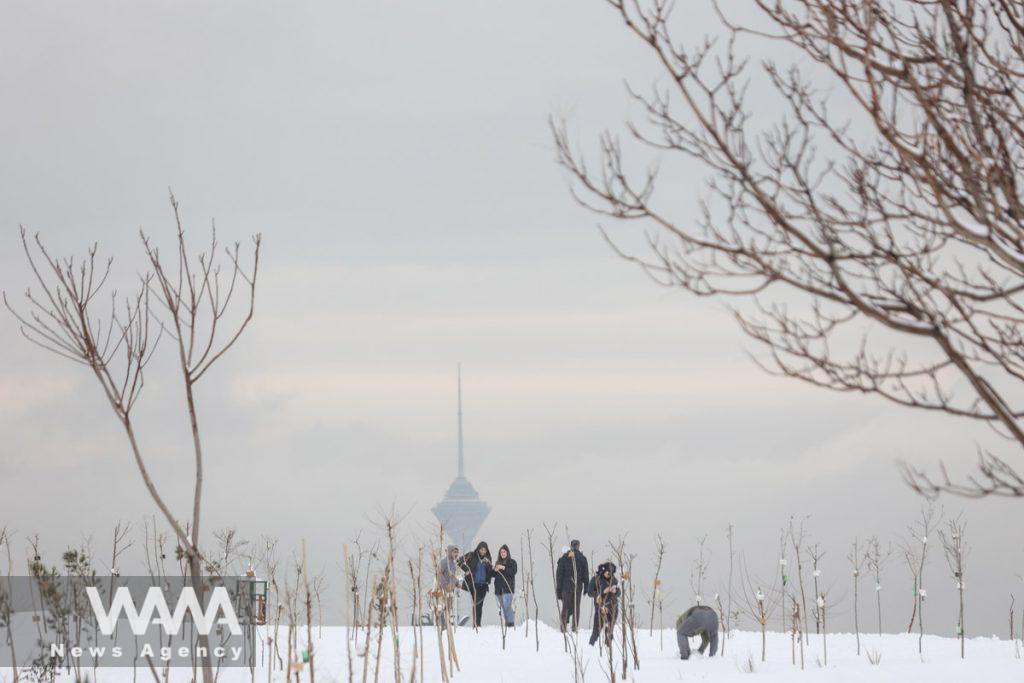
People walk during the first snowfall in a park in Tehran, Iran December 24, 2022. Majid Asgaripour/WANA (West Asia News Agency)
The issue of water scarcity has also sparked protests in some parts of the country such as the cities Isfahan, Shahr-e Kord and Khuzestan province during recent years.
Iran’s oil-rich Khuzestan Province, home to a large Arab minority witnessed protesters on the streets in July 2021who held the government accountable for water shortage and lack of hygiene drink water and called for taking action to resolve the issue. The event led to the death of some people there.
Furthermore, later that year in November, farmers staged protests against water shortages on the dry bed of the beautiful Zayanderud River which snakes through the historic city of Isfahan and later after the police intervened, the protests took a violent turn and were finally suppressed.
- An Iranian couple takes a selfie during the first snowfall in a park in Tehran, Iran December 24, 2022. Majid Asgaripour/WANA (West Asia News Agency)
- Dogs are seen during the first snowfall in a park in Tehran, Iran December 24, 2022. Majid Asgaripour/WANA (West Asia News Agency)
- People walk during the first snowfall in a park in Tehran, Iran December 24, 2022. Majid Asgaripour/WANA (West Asia News Agency)
- People walk during the first snowfall in a park in Tehran, Iran December 24, 2022. Majid Asgaripour/WANA (West Asia News Agency)
- Cars pass on a street during the first snowfall in Tehran, Iran December 24, 2022. Majid Asgaripour/WANA (West Asia News Agency)

